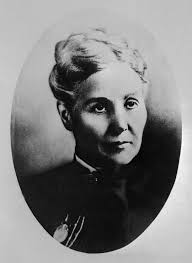History of Mother’s Day
Every year the second Sunday in May is celebrated as Mother’s Day. Let’s see how Mother’s Day actually began
- In 1858, when Ann Jarvis, a young Appalachian homemaker, organized “Mother’s Work Days” to improve the sanitation and avert deaths from disease-bearing insects and seepage of polluted water.
- In 1872, Boston poet, pacifist, and suffragist Julia Ward Howe organized a special day for mothers and peace soon after the bloody Franco-Prussian War.
- In 1905, when Ann Jarvis died. Her daughter Anna decided to remember her mother’s activism all her life and launched a campaign that culminated in 1914 when Congress passed a resolution on Mother’s Day.

Each woman and all of these events have contributed to the present occasion now celebrated on the second Sunday in May
The cause of world peace was the desire to found Julia Ward Howe on a special day for mothers over a century ago. After unsuccessful attempts to organize an international pacifist conference after the Franco-Prussian war, Howe began to think of a global appeal to women.
“As the war continued,” she wrote, she deeply felt “the cruel and unnecessary nature of the dispute”. She believed, like any woman, that she could have been resolved without bloodshed. And she asked herself, “Why don’t the mothers of humanity interfere in these affairs to avoid wasting the human life that only they have and know the cost?”
Howe’s version of Mother’s Day, which was an opportunity to defend peace, was successfully celebrated in Boston and elsewhere for several years, but lost popularity in previous years and faded from attention of the public during the First World War.
For Ann Jarvis, also known as “Mother Jarvis”, improving the mother community was just the beginning. During the civil war, she organized female brigades and urged workers to do everything they could, no matter which side their men chose. And in 1868 she took the initiative to heal the bitter divisions between her Confederate and Union neighbors.
Young Anna Jarvis was only twelve years old in 1878 when she heard her mother teaching the Bible about mothers during a Sunday school lesson. ““I hope and pray that someone, sometime, will found a memorial mother’s day,” said Senior Jarvis. “There are many days for men, but none for mothers.”
After the death of her mother, Anna Jarvis began an extraordinary campaign. she sent a constant stream of letters to prominent men, including President William Taft and former President Theodore Roosevelt, and received considerable assistance from Philadelphia businessman John Wannamaker.
In May 1907, on the second Sunday in May, a Mother’s Day service was held at the Methodist Church in Grafton, West Virginia, , where Mother Jarvis had taught.. On the same day, a special service was held in the Wannamaker Auditorium in Philadelphia, which could accommodate no more than a third of the 15,000 people.
The custom has spread to churches in 45 states and Puerto Rico, Hawaii, Mexico and Canada. The governor of West Virginia proclaimed Mother’s Day in 1912; The governor of Pennsylvania in 1913 did the same. The following year saw the Congressional Resolution, which was promptly signed by President Woodrow Wilson.
Mother’s Day has endured. it serves, as originally, to recognize the contribution of women. Mother’s Day is as varied as the work of “motherhood”. Perhaps that’s only appropriate for a day honoring the multiple ways women find to nurture their families, and the ways in which so many have nurtured their communities, their countries, and the lar


